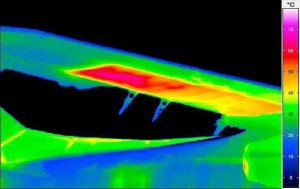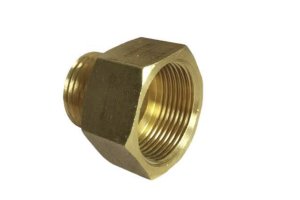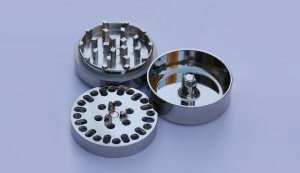When it comes to precision hole making, there are several machining techniques available, each with its strengths, weaknesses, and best-use cases. Among the most notable methods is single point boring—a technique that has gained significant popularity due to its ability to deliver highly accurate results. But how does it compare to other machining techniques like drilling, milling, and reaming? In this article, we’ll dive deep into the intricacies of single point boring, compare it to other common methods, and help you decide which technique is right for your project.
What is Single Point Boring?
At its core, single point boring is a machining technique that uses a single-point cutting tool, typically a boring bar, to enlarge and finish an existing hole. While it shares similarities with turning operations, the process specifically targets internal holes, making it ideal for achieving highly precise diameters.
Unlike other hole-making techniques where the tool is rotated, the boring bar remains stationary, and the workpiece is rotated against it. This stationary tool setup helps ensure stability, precision, and a smoother surface finish. For large-diameter holes or when tight tolerances are needed, single point boring is often the go-to solution.
How Does Single Point Boring Work?
Single point boring works by gradually removing material from the inside of a pre-drilled hole. The boring bar, which holds the cutting tool, is either positioned in a tool block on a lathe or within a boring head on a machining center. The key to the process lies in the controlled removal of material to achieve the desired diameter, while maintaining dimensional accuracy and surface smoothness.
The boring bar’s position is crucial—it needs to stay aligned with the center of the workpiece to ensure consistent cutting. Typically, the depth of cut is adjusted according to the material being worked on. Rough cuts are generally deeper to remove more material, while finishing passes are lighter, resulting in a finer surface finish.
Single Point Boring vs. Other Machining Methods
Single Point Boring vs. Drilling
One of the most common points of confusion is the difference between boring and drilling. While both methods are used to create holes, the purpose and precision of these techniques differ greatly.
- Purpose: Drilling is used to create a hole from scratch, whereas boring enlarges or refines an existing hole.
- Tool Type: Drilling uses a spiral drill bit, a multi-point tool designed for rapid material removal. Single point boring, on the other hand, uses a single-point cutting tool (boring bar) to achieve precise, controlled material removal.
- Precision: Boring delivers tighter tolerances, with some machines capable of achieving tolerances of ±0.002 inches, while drilling typically has tolerances of ±0.005 inches.
- Surface Finish: When it comes to surface finish, boring outperforms drilling with a smoother result, with an Ra value of 32-64 microinches compared to drilling’s rougher finish of 64-125 microinches.
- Material Removal Rate: Drilling is faster when it comes to material removal, thanks to its simpler cutting action. However, boring’s more controlled process makes it ideal for refining holes to exact specifications.
In short, boring is the go-to choice when you need to enlarge an existing hole with high precision, whereas drilling is suited for creating holes quickly but with less emphasis on precision.
Single Point Boring vs. Milling
Another common comparison is boring vs. milling. While both methods involve rotating cutting tools, there are distinct differences in their operations and applications.
- Purpose: Milling is a versatile process used for cutting shapes and contours, whereas boring specifically focuses on achieving precise hole diameters.
- Tool Type: Boring uses a single-point cutting tool to make incremental adjustments to hole size, while milling involves multi-point rotating cutters that remove material across a broader area.
- Precision: Boring delivers higher precision (tolerances as tight as ±0.002 inches) compared to milling (typically ±0.005 inches), which is more focused on shaping and surface finishing rather than fine hole making.
- Surface Finish: When it comes to surface finish, boring holds an edge, producing smoother surfaces with Ra values of 32-64 microinches, whereas milling usually results in rougher finishes (Ra values of 64-125 microinches).
- Setup Complexity: Boring requires more precise setup to avoid tool deflection and maintain concentricity, while milling setups tend to be simpler.
Milling, with its multi-point cutters, excels at shaping complex parts and surfaces, but for high-precision holes, boring is the more reliable choice.
Single Point Boring vs. Reaming
Both boring and reaming are used to improve hole accuracy, but there are clear distinctions between the two processes.
- Process: While boring enlarges existing holes and is often used to finish a hole to a specific diameter, reaming refines the surface and improves accuracy.
- Tool Type: Boring uses a single-point cutting tool, while reaming uses a multi-point tool (reamer), which removes less material at a time.
- Surface Finish: Reaming generally results in a superior surface finish compared to boring, which can leave a slightly rougher surface, though still very smooth compared to drilling.
- Material Removal Rate: Boring tends to have a lower material removal rate, as it is more focused on achieving precise dimensions, while reaming is faster in its material removal due to the multi-point tool design.
In situations where a hole needs to be accurately sized and finished, reaming is often used after boring to achieve an even finer surface finish.
Key Considerations for Single Point Boring
To achieve the best results with single point boring, several factors must be considered:
- Chatter: Chatter is a common issue that can lead to poor surface finishes and tool wear. To minimize chatter, ensure proper tool alignment and use anti-vibration systems or tools where possible.
- Stick-Out Length: The stick-out length (the length of the boring bar extending from the tool block) is critical. Ideally, it should be between 3-6 times the tool diameter to ensure stability during cutting.
- Depth of Cut: In single point boring, the depth of cut should be adjusted according to the task. For roughing cuts, a heavier depth of cut is used, while finishing passes require lighter cuts for smoother finishes.
- Chip Evacuation: Proper chip removal is vital to prevent clogging and overheating. Use the appropriate coolant systems and ensure adequate chip evacuation to maintain optimal cutting conditions.
- Workpiece Alignment: Correct alignment of the workpiece and boring bar is crucial for consistent results. Misalignment can result in inaccurate hole dimensions and poor surface quality.
Safety Considerations for Single Point Boring
Safety is always a top priority in any machining operation. For single point boring, key safety considerations include:
- Personal Protective Equipment (PPE): Operators should always wear safety glasses or goggles to protect their eyes from debris, hearing protection for noise, and gloves to prevent hand injuries.
- Machine Safety: Regular inspections and maintenance are critical. Always check for loose parts, worn-out components, or malfunctioning safety features before starting the machine.
- Workpiece Handling: Ensure that the workpiece is securely mounted and aligned correctly to avoid any movement during cutting.
- Tool Safety: Handle boring bars carefully, ensuring they are properly secured in the tool holders. Always follow proper procedures when inserting or removing tools.
- Vibration Control: Use anti-vibration tools or smart boring systems to maintain stability and reduce tool wear.
Conclusion
In the world of precision hole-making, single point boring stands out as the best method for achieving tight tolerances and high surface finishes. While it may not be the fastest technique, its ability to produce highly accurate, large-diameter holes makes it a crucial tool in industries like aerospace, automotive, and engineering. By understanding its differences from drilling, milling, and reaming, you can make more informed decisions about which machining method is best suited for your specific application. Whether you’re refining an existing hole or enlarging it to precise specifications, single point boring offers the accuracy and reliability needed for the job.
By considering factors such as tool selection, setup, and safety precautions, you can achieve optimal results in your boring operations, making it a key technique in any high-precision machining shop.
Other Articles You Might Enjoy
- Detailed Analysis of Single-Point Boring Techniques in CNC Machining Parts
What is CNC Machining Boring CNC boring is an advanced machining process that uses computer numerical control (CNC) technology to enlarge or refine pre-existing holes in a workpiece with precision…
- Elevating Precision Standards through Chamfer in CNC Machining
1. Introduction: The Pursuit of Unparalleled Precision In the realm of CNC machining, precision is paramount. This section introduces the article by exploring the significance of precision in manufacturing and…
- Precision and Control in Machining
Machining precision is the foundation for ensuring the performance and longevity of mechanical products. During machining, various factors can cause the correct position between the tool and the workpiece to…
- Precision Prowess: Unveiling the Advantages of China CNC Machining
1. Introduction: The Role of Precision in Manufacturing Excellence In this introductory section, we delve into the critical role that precision plays in manufacturing and set the stage for an…
- Revolutionizing CNC Machining for Complex Aerospace Assemblies
Introduction to CNC Machining in Aerospace Assemblies Computer Numerical Control (CNC) machining represents a significant technological development playing a notable role in the creation of complex aerospace assemblies. CNC machining…
- The Role of Prototype Machining in Accelerating Product Development
Introduction: The Importance and Definition of Prototype Machining Prototype machining is a critical element advancing product development. It involves the technique of manufacturing an early model or sample, known as…









